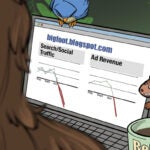 Once upon a time, Microsoft seemed to be positioning itself as both a publisher, via its network of owned and operated sites, as well as an ad tech provider – sort of like where AOL is today.
Once upon a time, Microsoft seemed to be positioning itself as both a publisher, via its network of owned and operated sites, as well as an ad tech provider – sort of like where AOL is today.
In 2007, it bought aQuantive for just north of $6 billion, which included major digital marketing players like the agency Razorfish and the ad server Atlas. Unfortunately, those initial high hopes culminated in a writedown for roughly the value of that acquisition.
Razorfish is now one of Publicis Groupe’s digital agencies. And Atlas just got rebooted at Facebook.
But Microsoft is still a major player in the advertising world, even if its focus in that realm is no longer technological. It’s had the Microsoft Advertising Exchange (MAX), powered by AppNexus, since 2010, and it’s steadily beefed up the quantity and variety of available inventory.
In mid-September, for instance, it added mobile inventory (but didn’t reveal exactly how much). And advertisers can buy ads in the Microsoft Network (MSN) family of websites, the email service Outlook.com and the voice and video chat provider Skype.
And Xbox? Well, not quite yet.
Still, Microsoft continues to build out its capabilities as an exchange and as a programmatic seller. It’s in the early stages of developing programmatic-direct tools, said James Colborn, the company’s direct and programmatic sales manager.
“As we evolved [programmatically], a lot of what people are asking for now – like private marketplaces so they can see what they’re buying on quality impression sources – has meant that Microsoft has become more of a consideration,” he said. “We’ve become a lot more relevant in media buyers’ minds based on what we’re selling. We’re selling programmatically, but not selling anything different.”
Colborn spoke with AdExchanger.
AdExchanger: When I think of Microsoft and what you’re doing in programmatic, I think of you mostly as a publisher. Are you guys developing an ad stack, like what AOL is doing, to complement the publisher side?
JAMES COLBORN: Right now, our focus is on selling impressions through our exchange, allowing others in the marketplace to add whatever additional elements to the stack that they want to add to present advertisers with solutions they need.
One of the areas we’re developing is programmatic direct. It’s very much about automating media buying. We’re looking at how to facilitate the purchase of Microsoft’s direct-sold solutions, but programmatically instead of old-fashioned I/Os.
So are you talking about automating the sales process or adding more data components to better target?
Both. On the Microsoft Advertising Exchange, we sell impressions. Those impressions can be bought in an auction environment with the transparency we talked about. On the programmatic-direct side, we will be mirroring what is sold direct today and automating that process and workflow. A lot of solutions might also have elements of Microsoft’s proprietary data and insight as well. You’ll be able to buy one of Microsoft’s behavioral targeting segments.
So if you’re looking to buy automotive enthusiasts through Microsoft’s inventory, you can do that through our programmatic direct solution.
Is the only inventory available through MAX Microsoft inventory?
Yes. I’d say the majority of Microsoft’s inventory that’s available programmatically today is our owned and operated properties. And that’s growing as we add new inventory to that. So we’re now looking at how to add app-based impressions on Windows 8 and now mobile as well.
We want to make sure that what we sell direct we also sell in the exchange. But if you buy direct, you do get that first chair, first look type of approach where you get to book the impressions with a guarantee.
What kind of guarantee?
Right now on the direct basis, you’ll get a guarantee against delivery. So if you say, “I want 100 million impressions of a particular inventory source,” we’ll guarantee the delivery of those impressions. You also get the opportunity to buy Microsoft’s modeled or additional data. So think of Microsoft’s cross-screen solution, where you’re buying an audience based on our proprietary knowledge and data that we know about somebody. But you’re buying that audience across all of our screens. That’s sold on a direct basis.
In the Microsoft Advertising Exchange today, we’re looking at just the impressions.
Do search and display tie together?
We have a solution called Search Retargeting. We use a lot of the knowledge we get from peoples’ searches, which gives us really good intent intelligence about some of our users. We use that to create targeting segments we then sell.
It’s a direct-sold solution. Right now, we’re in very early days and in pilot phases with a few partners. Some of our first party data is being used to create segments that are sold programmatically, but on a direct basis.
These people are buying Microsoft solutions, but instead of doing it with an I/O, they do it through an interface.
Do you run a private exchange as well?
Yes, Microsoft Advertising Exchange is an open marketplace, but we’re in the position to offer advertisers a series of different capabilities on the exchange, going all the way through to private marketplaces or preferred bidding.
What benefits does one get bidding in a private exchange that they wouldn’t get in an open exchange?
In an open exchange, you’re bidding with a lot of advertisers. Often advertisers might still want to buy programmatically but they’ll want to see those impressions before anyone else in that auction. [They] can have a first look or priority auction where, for an increased price on the Microsoft Advertising Exchange, they’ll see those impressions ahead of all of the others who are bidding.
What are the business needs of entities bidding on a private exchange?
When you’re in the open exchange, you’re bidding on all the sites available to you based on the audience you have. When you have a private deal, you’re bidding on specific sites.
Some advertisers want specific sites, or an element of brand safety. This gives us the opportunity to offer greater transparency with the impressions we’re selling. Instead of just buying MSN, they’re buying MSN Auto or MSN Lifestyle.
We often find people choose sites if they have prior knowledge of how well they’ve performed.
Do you have a DSP or do DSPs hook into your exchange?
The DSPs hook into an exchange. AppNexus powers our exchange and all of the DSPs and technology partners hook up to AppNexus.
I’d imagine the purposes of targeting people on Skype are different from targeting people on MSN. Do advertisers buy everything as a bundle?
[In] the open exchange, all of those impressions are bundled together. We have top-level domain transparency, so they know they’re buying MSN or Skype or Outlook. Typically, they’ve worked with a data-management platform or the DSP has some retargeting capability that’s finding that audience based on the time, the place and the real-time element of that real-time bidding.
Can I buy Microsoft inventory in other exchanges?
Just Microsoft.
Is Xbox hooked into the exchange?
Right now, we don’t have any Xbox impressions on the exchange. From a timeline point of view, I can’t comment on that.
But Xbox is definitely an advertising opportunity for us.
Are clients asking for it?
We do get requests for Xbox impressions on the exchange from different advertisers over time.
Can advertisers buy video inventory programmatically through MAX?
That’s not available on the exchange right now. Reason being is that demand for video impressions is so high, there’s limited need for selling those impressions in a programmatic marketplace. Demand is high on a direct basis. As much as I often get requests for video impressions programmatically, we find those impressions have been sold before they get to the auction environment.













